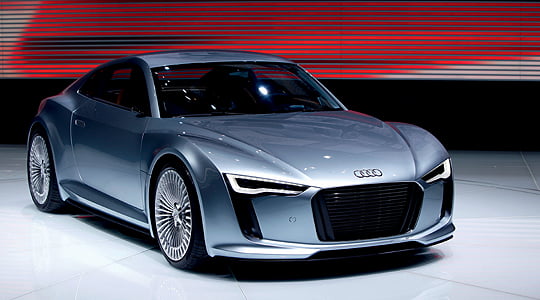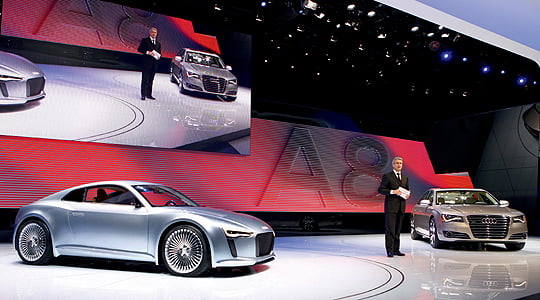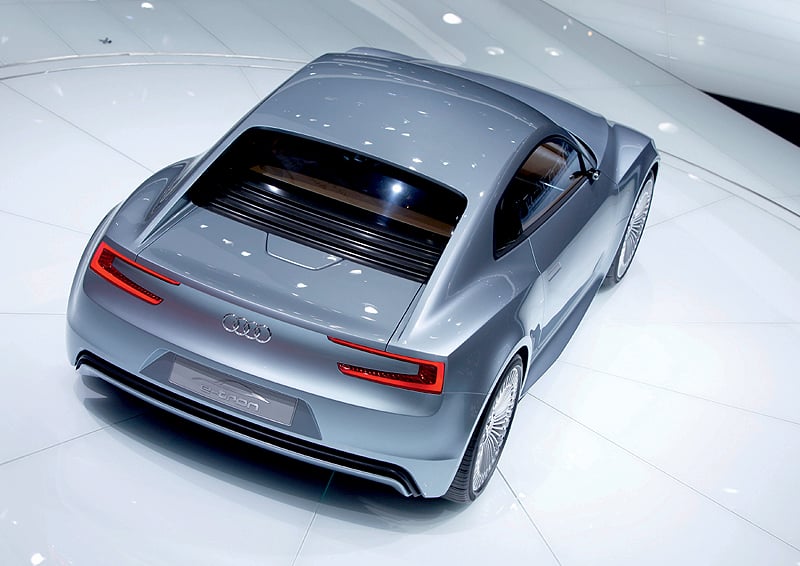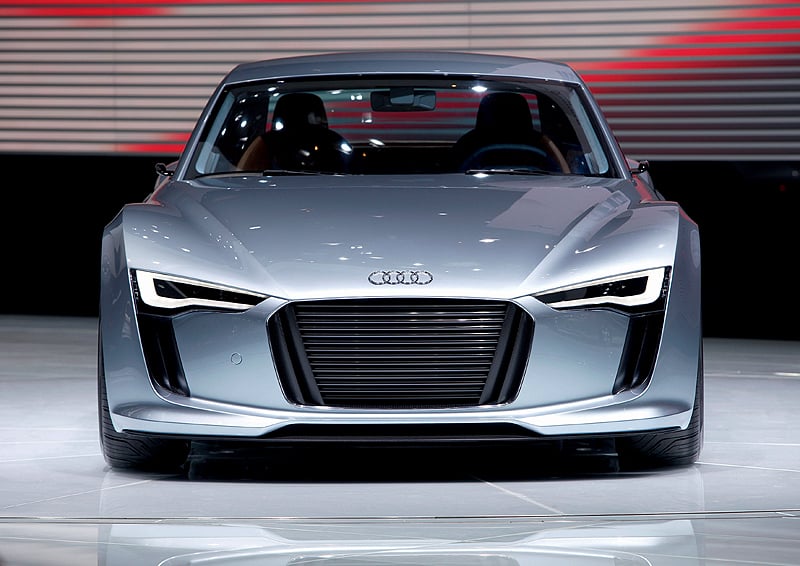
As the famous quote goes, the last car will be a sportscar, writes Chris Hrabalek. Having seen Audi’s second e-tron effort – in the form of yet another electric concept car instalment – one can only hope that the last car will also be a petrol-powered one.
It’s characteristic of the automotive industry that the goods and services offered by manufacturers lag some way behind the products wanted, or needed, by consumers. This phenomenon is easily explained by the fact that the buyer’s ‘instant’ desire cannot be met quite so instantly by the manufacturer. In the case of a car, a clean-sheet development takes a minimum of three years; and even this figure is very optimistic.
In other words, at least 1095 days have to pass from the decision to develop a niche product – which in itself can take a considerable amount of time to identify and decide upon – to the day that the product leaves the dealer’s showroom. Hence the luxury models and supercars which frequently debut at the start of a global recession.

The current belief that battery-powered vehicles can save the planet is not necessarily in line with the perception and understanding we might expect in a few years’ time. And although Johan de Nysschen, Audi President of America, had the foresight to call anyone interested in buying an electric car an ‘idiot’, it has not stopped his employer from developing the new e-tron in an attempt to find a solution to global warming and world peace.
Over to the new e-tron, then. Let’s put the electric drive – which has in no way influenced the general layout or proportion of the concept – aside for the moment; and we are left with a car whose blunt and uninspired styling is very 1980s at best. If one were particularly critical, one could even go so far as to say that if the Audi R8-style face were removed, leaving the overall volume and design theme in place, it could easily be mistaken for a retro Toyota MR2 revival, with DeLorean-inspired rims. Especially in the rear three-quarters area.
While one cannot deny a certain degree of Ingolstadt’s finest in some of the elements and perspectives (such as the bulky wheelarches that desperately try to create a visual connection to its legendary quattro forefathers), the overall design statement of the second e-tron is not one of long-term vision. A contemporary DLO (‘Day Light Opening’) meets an old-fashioned volume, meets a bland rear end and a side-view that lacks motion, drama and Vorsprung. If this car represents the styling of things to come, one might want to consider skipping the next decade altogether and moving straight to the 2020s.


It remains to be seen whether we will all become emission and carbon-footprint free by the end of the next century, and whether the occasional weekend drive in a fossil-fuel-powered vehicle will seem as bizarre as fetching your croissants and Sunday paper via steam car. However, one thing is certain: if we are to adopt this new miracle means of transportation, we should explore new forms of vehicle architecture along with it – to maximise the technological opportunities we’re given.
In the same way that Issigonis’ Mini was a step beyond the horseless carriage that came before it, manufacturers should aim to present a realistic vision of something we’d want to own a few years from now – especially if we are talking about a concept car.
Text: Chris Hrabalek
Photos: Audi
ClassicInside - The Classic Driver Newsletter
Free Subscription!




